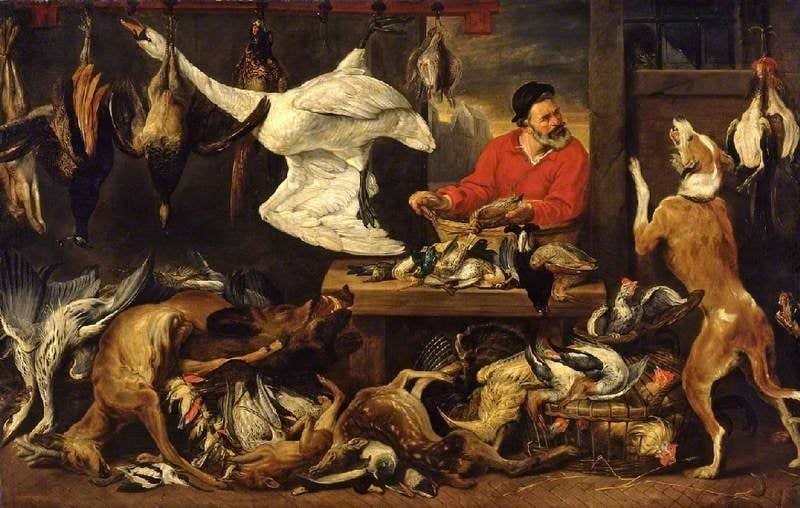Art World
Students Convinced Cambridge University to Remove a ‘Slightly Repulsive’ 17th-Century Painting From Their Dining Hall
The canvas by Frans Snyders depicts a butcher lording over a scene of carnivore carnage.

The canvas by Frans Snyders depicts a butcher lording over a scene of carnivore carnage.

Maxwell Williams

Upset students at Cambridge University successfully petitioned to have a painting depicting a butcher removed from their dining hall. The painting, The Fowl Market by the studio of early-17th-century Dutch painter Frans Snyders, loomed large above those in the dining room at Hughes Hall, a postgraduate school within Cambridge.
The painting depicts the butcher at his labors, surrounded by a veritable mountain of dead animals. Nearby, a living dog appears to be barking.
“Some diners felt unable to eat because it was on the wall,” a spokeswoman from Cambridge told The Telegraph in November. “People who don’t eat meat found it slightly repulsive. They asked for it to come down.”
And even carnivores might not exactly what to be confronted with an artistic depiction of where their food comes from.
“Generally speaking, and regardless of its traditional character and social status, meat tends to have a negative image mainly due to its association with the living animal, handling practices and slaughter conditions, the presence of blood, environmental issues, and religious, ideological, ethical, or moral concerns,” reads a 2014 study published by Meat Science Journal in 2014.
Snyders was an important Dutch painter in his time, and one of the earliest animaliers, specialist painters who mainly painted animal subjects. This led him to collaborate with Peter Paul Reubens on several occasions. Snyders painted the eagle who would eat Prometheus’s perpetually regrowing liver, punishment for Prometheus stealing Zeus’s fire, in Reubens’s Prometheus Bound (c. 1611–1612, completed by 1618). Snyders also painted the snake hair on Reubens’s c.1618 painting Medusa.
The Fowl Market had been on long-term loan to Hughes Hall from Cambridge’s Fitzwilliam Museum. After the painting was removed in November, it was restored and placed into “Feast & Fast: The Art of Food in Europe 1500–1800,” a show that “will tease out many contemporary and controversial issues—such as the origins of food and food security, overconsumption in times of austerity, and our relationship with animals and nature—thereby linking the past with our present, and encouraging visitors to question and rethink our relationship with food,” according to press materials from the museum.
The museum will have a 12-foot-tall pineapple installed outside on its front lawn for the duration of the exhibition, created by British “food artist” duo Bompas & Parr, who became famous for their gelatin-building creations.
It’s unclear what, if any, artwork Hughes Hall will hang in place of its banished butcher.